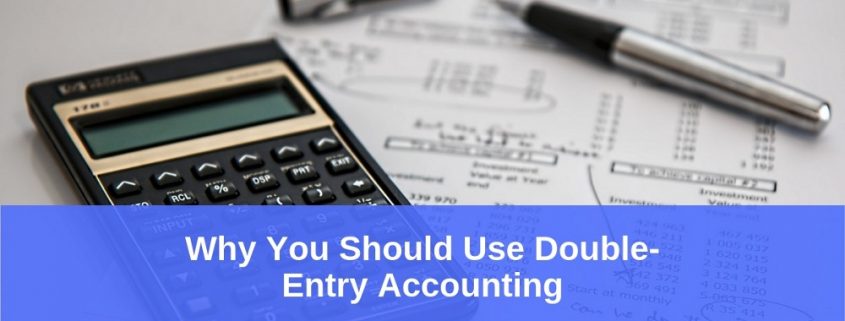Why Businesses Should Adopt Double-Entry Accounting
Are your business bookkeeping practices flawed and inaccurate? There are several ways to ensure that your documented account balances are painting a clear picture of the financial state of your company. One of these methods and perhaps the most reliable option includes double-entry accounting.
This post provides an overview of the traditional accounting practice, as well as tips for adopting double-entry bookkeeping in your business.
Double-Entry Accounting 101
A double-entry accounting system refers to the process of recording transactions in two different accounts: credit and debit. These two components have very different effects on business accounts. Debits decrease income earnings and liability accounts, while increasing expense and asset accounts.
On the other hand, credits have the opposite effect on accounts (i.e., decreases expense and asset accounts and increases income and liability accounts). Each “side” can be further broken down into the following components: Debit (Assets + Losses + Expenses + Owner Draws) = Credit (Liability + Owner Contributions + Gains + Revenue).
“For example, in a cash sale transaction using the double-entry system, a company makes a debit to the cash asset account, which is a debit account, to increase the amount of cash received from the sale, and makes a credit for the same amount to the revenue account, which is a credit account, to increase the amount of revenue as a result of the sale,” said Jay Way from Chron, a website that specializes in small business trends.
Why Do I Need It?
If done correctly, one should end up with matching debit and credit totals, indicating that the accounts are balanced and updated. Any inconsistencies or erroneous entries are easily detectable in double-entry accounting. Individuals have a few options when applying this conventional accounting practice.
Traditionally, one could manually enter transactions in two separate columns and add up both sides to confirm the balances. This sales data double-entry option is prone to errors (and can be time consuming), especially if the business has a long list of transactions. It would also be possible to get help from an accountant, which could be costly from a long-term perspective.
The last option involves relying on a Point-of-Sale (POS) systems also known as POS double-entry, to monitor and calculate business transactions. Most cloud-based point of sale systems or expense-tracking software come with double-entry accounting features, allowing you to bypass the need to perform meticulous data entry and long calculations.
For companies looking for effective balance verification methods, double-entry accounting is considered to be the global standard for business accounting. Moreover, a thorough and accurate balance sheet (in some cases) is more helpful than a profit loss report, when addressing financial concerns related to the business.
How eHopper Can Help
Accurate data entry skills are required for manual or cash double-entry accounting. Eliminate these requirements and upgrade your back-end accounting workflows by installing eHopper’s POS system inside the establishment.
With a functional POS platform recording transactional data autonomously in the background and generating timely reports with just a few clicks, companies can be sure that their account balances are always updated and error-free.









Leave a Reply
Want to join the discussion?Feel free to contribute!